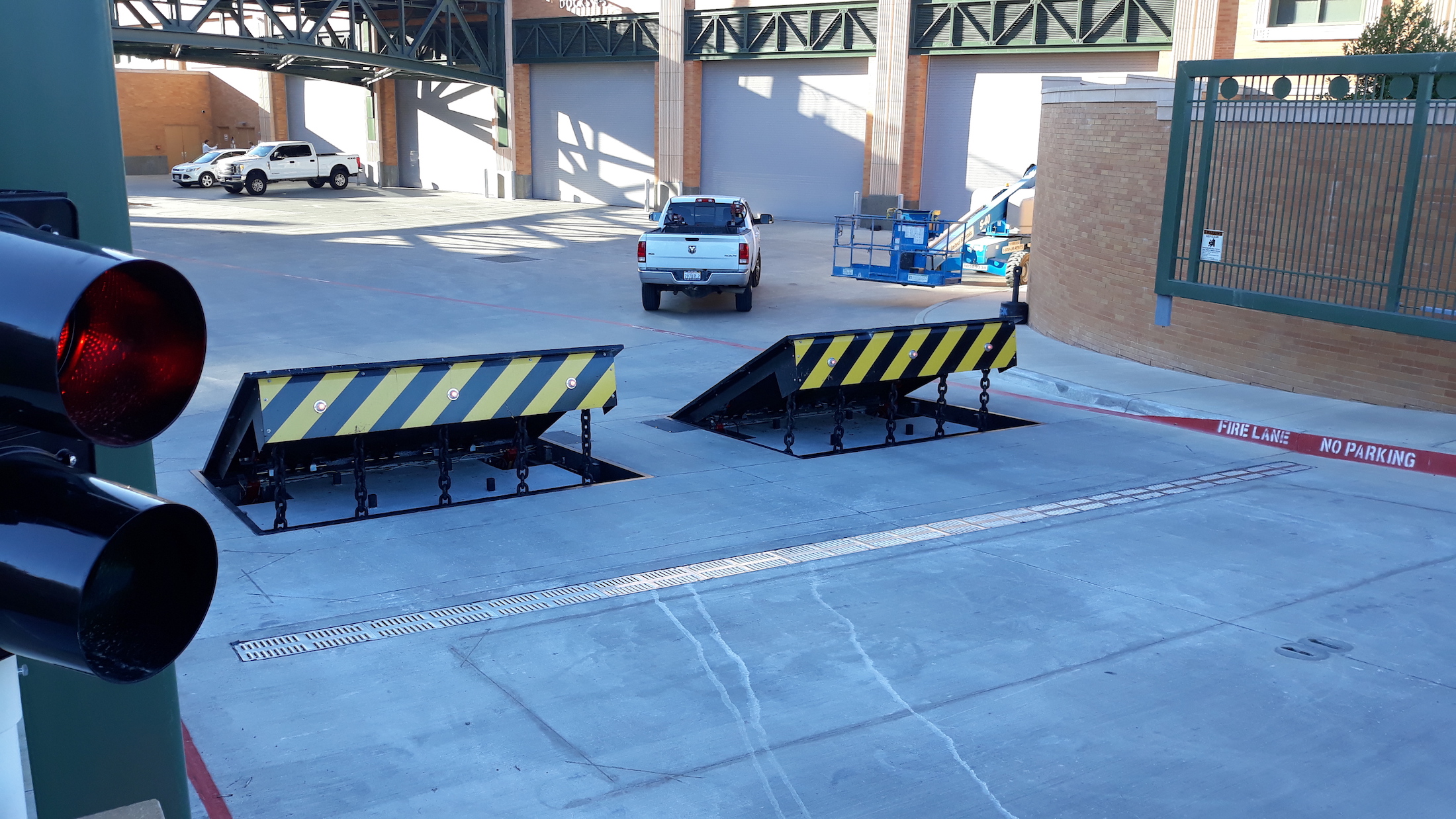Wedge Barriers Can Be Fun For Everyone
Table of ContentsThe Best Guide To Wedge BarriersA Biased View of Wedge Barriers

The 7-Minute Rule for Wedge Barriers
g., spring support 65 )might be repaired to completion of the spring pole 58 to make it possible for compression of the springs 60. As the springtimes 60 are compressed between the spring sustains 62, the springtime assembly 54 produces a force acting upon the cam paired to the spring pole 58 in an instructions 66. The remaining pressure applied to
the cam camera deploy the wedge plate 16 may be provided given an electromechanical actuator 84 or other actuator. The springtime setting up 54 and the actuator 84(e. g., electromechanical actuator)might operate with each other to translate the camera and lift the wedge plate 16.
As discussed above, the springtime setting up 54 exerts a consistent pressure on the cam, while the electromechanical actuator may be controlled to apply a variable pressure on the cam, thus allowing the training and decreasing( i. e., releasing and retracting )of the wedge plate 16. In certain embodiments, the continuous pressure used by the spring assembly 54 may be flexible. g., electromechanical actuator) is handicapped. As will certainly be valued, the springtime setting up 54 might be covered and protected from debris or other aspects by a cover plate(e. g., cover plate 68 displayed in FIG. 4) that may be significantly flush with the elevated surface 38 of the foundation 14. As pointed out above, in the deployed position, the wedge plate 16 serves to block access or traveling past the obstacle 10. As an example, the barrier 10(e. g., the wedge plate 16 )may obstruct pedestrians or lorries from accessing a building or path. As reviewed above, the barrier 10 is attached to the support 30 safeguarded within the structure 14,

front brackets 71. Consequently, the affiliation settings up 72 may pivot and rotate to make it possible for the collapse and extension of the affiliation assemblies 72 throughout retraction and implementation of the bather 10. The link settings up 72 cause activity of the wedge plate 16 to be limited. For example, if an automobile is traveling towards the deployed wedge plate 16(e. For example, in one scenario, the security legs 86 might be extended duringmaintenance of the obstacle 10. When the security legs 86 are released, the safety legs 86 sustain the weight of the wedge plate 16 against the surface area 12. Because of this, the training mechanism 50 may be deactivated, serviced, eliminated, replaced, etc. FIG. 5 is partial perspective sight of a personification of the surface-mounted wedge-style obstacle 10, illustrating the camera 80 and the camera surface areas 82 of the training device 50. Specifically, 2 web cam surfaces 82, which are described as reduced cam surfaces 83, are positioned below the webcam 80. The reduced webcam surface areas 83 might be a knockout post fixed to the surface 12 (e. For instance, the lower camera surfaces 83 and the placing plate 85 might form a solitary piece that is protected to the support 30 by bolts or various other mechanical fasteners. Furthermore, two webcam surface areas 82, which are referred to as top cam surface areas 87, are placed over the webcam 80 and coupled to (e. In various other personifications, interfering layers or plates might be positioned in between the surface 12 and the reduced web cam surfaces 83 and/or the wedge plate 16 and the upper camera surface areas 87 As stated above, the camera
80 converts along the webcam surface areas 82 when the wedge plate 16 is raised from the retracted setting to the deployed placement. Furthermore, as mentioned above, the springtime assembly 54 (see FIG. 3 )might provide a pressure acting on the cam 80 in the direction 102 via spring rod 58, which might lower the force the electromechanical actuator 84 is called for to put on the camera 80 in order to actuate and lift the wedge plate 16. 1 )to the released setting(see FIG. 4). As shown, the web cam visit 80 consists of track wheels 104(e. g., rollers), which call and translate along the webcam surface areas 82 throughout operation.